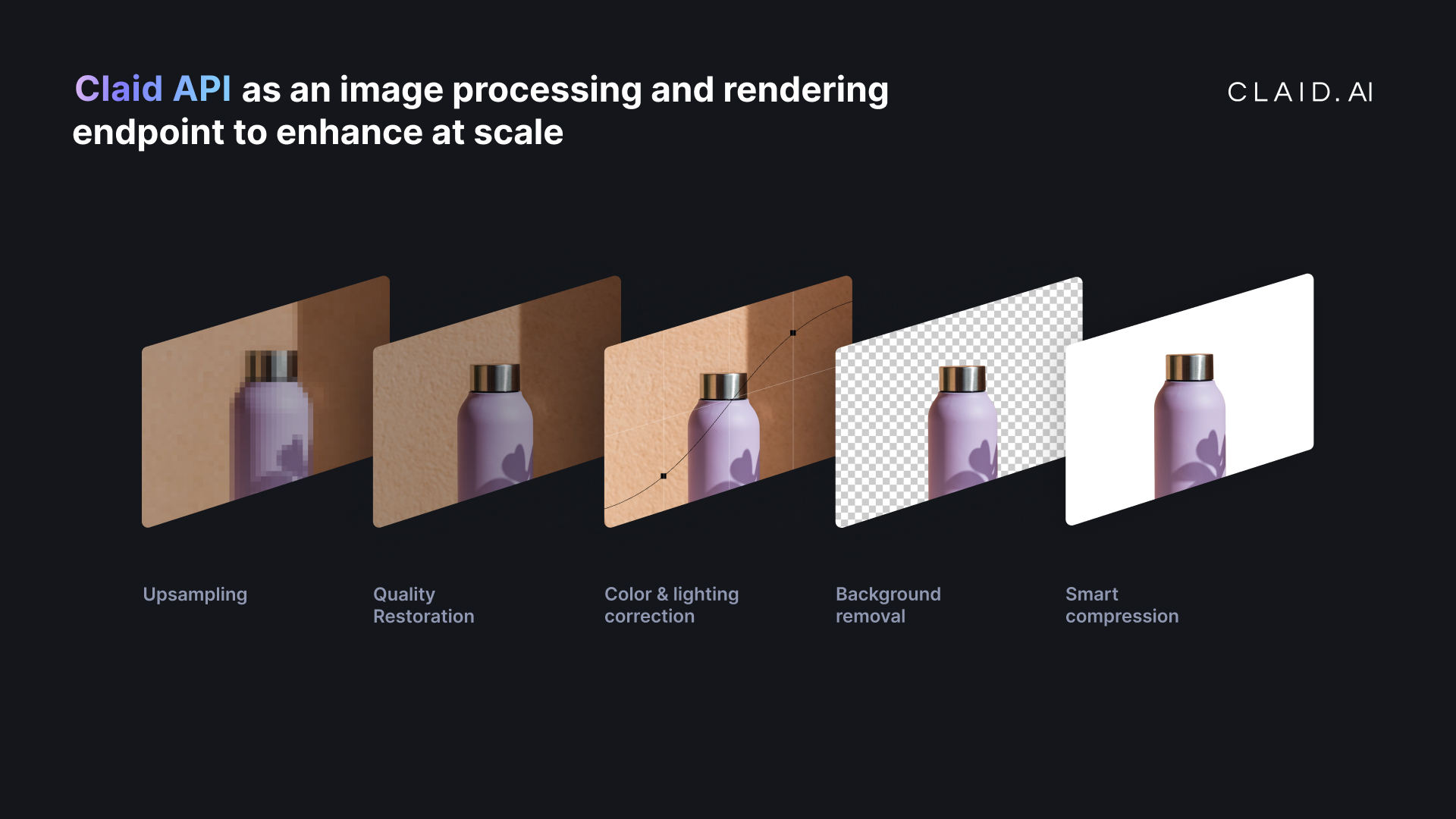
Let's Enhance: Complete Buyer's Guide
API-centric AI image upscaling solution
Let's Enhance positions itself as an API-centric AI image upscaling solution targeting enterprises requiring scalable processing capabilities alongside self-service platforms for individual users. The vendor differentiates through proprietary "Magic AI" technology that provides granular control over enhancement creativity levels, allowing users to adjust the balance between fidelity and artistic interpretation for different enhancement styles[44][50].
Market Position & Maturity
Market Standing
Let's Enhance operates in the API-centric segment of the AI image upscaling market, competing alongside their enterprise offering Claid.ai while maintaining self-service capabilities. This dual-platform strategy addresses both individual designers and enterprise integration requirements within a unified approach, demonstrating strategic market positioning[49][55].
Company Maturity
Enterprise market penetration shows through dedicated account management for enterprise customers with SLA-backed response times, indicating operational maturity and enterprise-grade service capabilities. This contrasts with email-only support for SMB users, showing clear market segmentation strategy[45][51].
Growth Trajectory
Growth indicators include API expansion and feature development responding to customer requirements, suggesting active development and market responsiveness. However, specific funding, revenue, or customer growth metrics are not available in current research[41][57].
Industry Recognition
Industry recognition appears through customer adoption patterns in specific verticals, with documented success in print-on-demand, real estate, and e-commerce sectors. The platform's ability to deliver measurable business outcomes in these verticals demonstrates market validation[46][49].
Proof of Capabilities
Customer Evidence
Printify Integration Success: Let's Enhance's Claid API integration with Printify demonstrates measurable business impact through automated enhancement of low-resolution merchant images. The implementation reduced manual rework requirements and improved print quality, with reported achievement of higher merchant satisfaction and reduced customer complaints. The success directly enabled Printify to expand product size offerings, with sales growth attributed to image quality improvements[49].
Quantified Outcomes
Technical Performance Validation: Documented testing shows 16x scaling capability with 6240×4680 output from 780×585 input under specific test conditions, demonstrating measurable performance advantages over traditional Photoshop bicubic interpolation. Processing speed reaches 4 seconds for 4K images via API under optimal conditions[40][56][57].
Market Validation
Market validation comes through documented enterprise implementations in e-commerce and real estate verticals where automated image enhancement directly impacts business metrics. Customer success patterns include Printify's integration achieving measurable business impact through automated enhancement of low-resolution merchant images[46][49].
Competitive Wins
Competitive Performance Evidence: Real-time batch processing handles 50+ images simultaneously, demonstrating throughput advantages over competitors like VanceAI in documented comparisons. This capability proves particularly valuable for design teams managing large asset libraries[40][51].
AI Technology
Let's Enhance's proprietary "Magic AI" technology distinguishes the platform through adjustable enhancement parameters that allow design professionals to control the balance between technical fidelity and creative interpretation. This capability addresses diverse project requirements from precise technical documentation to stylized creative assets, providing granular control unavailable in standardized competitor approaches[44][50].
Architecture
The platform's technical architecture centers on cloud-based processing that eliminates local hardware constraints while providing scalability advantages. Processing capabilities reach 4 seconds for 4K images via API under optimal conditions, with real-time batch processing handling 50+ images simultaneously[40][51][56][57]. This cloud-first approach addresses computational demands while maintaining accessibility for organizations without high-end GPU infrastructure.
Primary Competitors
Let's Enhance competes in the API-centric segment alongside Claid.ai (their enterprise offering) while maintaining self-service capabilities. This dual approach addresses both individual designers and enterprise integration requirements within a unified platform strategy[49][55].
Competitive Advantages
Let's Enhance demonstrates superior batch processing capabilities and generative features compared to VanceAI, with documented throughput advantages in real-time processing scenarios. The Magic AI feature provides enhanced creative control unavailable in VanceAI's more standardized approach[49][55].
Market Positioning
Let's Enhance positions against premium desktop solutions by emphasizing API integration capabilities and cloud processing scalability rather than desktop precision. This positioning targets scalability-focused buyers requiring automated workflows over manual enhancement control[49][55].
Key Features

Pros & Cons
Use Cases
Integrations
Pricing
Featured In Articles
Comprehensive analysis of AI Upscaling Tools for AI Design for AI Design professionals. Expert evaluation of features, pricing, and implementation.
How We Researched This Guide
About This Guide: This comprehensive analysis is based on extensive competitive intelligence and real-world implementation data from leading AI vendors. StayModern updates this guide quarterly to reflect market developments and vendor performance changes.
57+ verified sources per analysis including official documentation, customer reviews, analyst reports, and industry publications.
- • Vendor documentation & whitepapers
- • Customer testimonials & case studies
- • Third-party analyst assessments
- • Industry benchmarking reports
Standardized assessment framework across 8 key dimensions for objective comparison.
- • Technology capabilities & architecture
- • Market position & customer evidence
- • Implementation experience & support
- • Pricing value & competitive position
Research is refreshed every 90 days to capture market changes and new vendor capabilities.
- • New product releases & features
- • Market positioning changes
- • Customer feedback integration
- • Competitive landscape shifts
Every claim is source-linked with direct citations to original materials for verification.
- • Clickable citation links
- • Original source attribution
- • Date stamps for currency
- • Quality score validation
Analysis follows systematic research protocols with consistent evaluation frameworks.
- • Standardized assessment criteria
- • Multi-source verification process
- • Consistent evaluation methodology
- • Quality assurance protocols
Buyer-focused analysis with transparent methodology and factual accuracy commitment.
- • Objective comparative analysis
- • Transparent research methodology
- • Factual accuracy commitment
- • Continuous quality improvement
Quality Commitment: If you find any inaccuracies in our analysis on this page, please contact us at research@staymodern.ai. We're committed to maintaining the highest standards of research integrity and will investigate and correct any issues promptly.